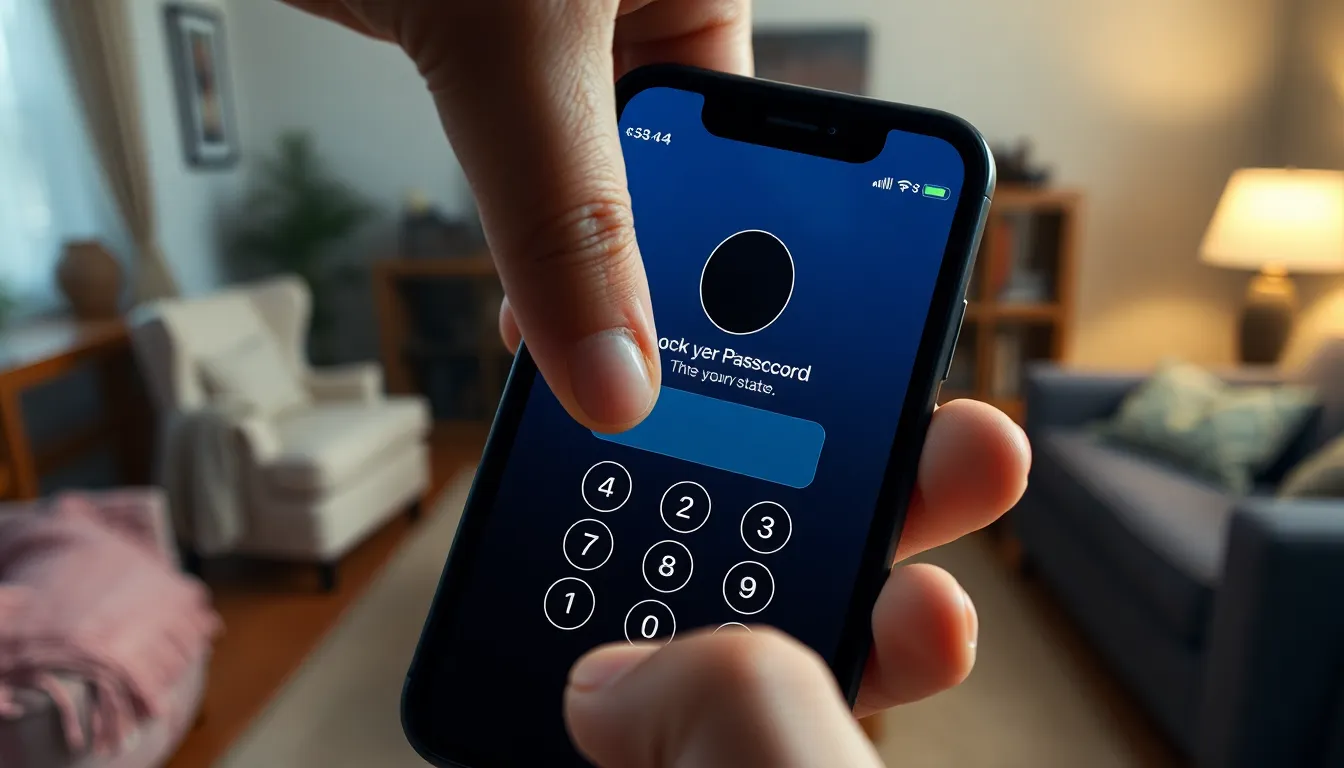Imagine this: you’re all set to snap the perfect selfie, but your iPhone decides to play hard to get, locking you out for good. Panic sets in as you realize it’s permanently locked, leaving you feeling like you’ve just been thrown into a digital prison. But fear not! There’s a way to break those chains and reclaim your beloved device.
In this guide, he’ll explore the ins and outs of unlocking a permanently locked iPhone. Whether it’s a forgotten password or a stubborn activation lock, he’s got the tools and tricks to help you escape tech purgatory. Get ready to laugh a little and learn a lot as we turn that locked iPhone back into your trusty sidekick.
Table of Contents
ToggleUnderstanding iPhone Locks
Understanding different iPhone locks is essential for users aiming to regain access. Various lock types exist, each with specific characteristics and challenges.
Different Types of Locks
iPhones may encounter several types of locks. A passcode lock protects user data and limits access based on a designated number sequence. An activation lock appears when Find My iPhone is enabled; it requires the original Apple ID and password for unlocking. Additionally, carrier locks restrict phones to specific network providers, limiting functionality with other carriers. Users must identify the lock type to determine the correct unlocking method.
The Implications of a Permanent Lock
A permanent lock on an iPhone has significant implications. Data becomes inaccessible without the correct credentials. Users face the loss of personal photos, contacts, and crucial information. Furthermore, a permanently locked device can lead to wasted time and effort in attempts to unlock it. In a worst-case scenario, users may need to contact Apple Support or visit a service center, incurring potential costs. Understanding these implications emphasizes the importance of secure account management and prompt password recovery actions.
Common Reasons for Permanent Lock

Permanent locks often stem from a few key issues, each disabling access to the iPhone. Understanding these reasons helps in preventing such frustrating situations.
Forgotten Passcodes
Forgetting a passcode remains one of the most common reasons for a permanent lock. When users input the wrong passcode multiple times, the iPhone disables access for security purposes. This protection aims to keep personal information safe from unauthorized users. Resetting the device typically resolves the issue, but this process can eliminate all data without prior backups. Users should note their passcodes in a secure location to avoid this scenario in the future.
Security Configuration Issues
Security configuration issues also play a significant role in causing permanent locks. Network settings or software updates may inadvertently trigger these problems, resulting in unintended locks. An example includes changes to the Apple ID associated with the device, creating conflicts during activation. Troubleshooting these issues often requires careful attention to device settings and the restoration process. Ensuring that all security details remain accurate can reduce the likelihood of experiencing these lockouts.
Step-by-Step Guide on How to Unlock a Permanently Locked iPhone
Permanently locked iPhones require specific methods for unlocking, depending on the situation.
Using iTunes to Restore the Device
Connect the iPhone to a computer with iTunes installed. Launch iTunes and select the device icon. Click on “Restore iPhone” to erase the device and its passcode. During this process, everything on the device, including the passcode, will be removed. After restoration, set up the iPhone as a new device or restore from a backup. Ensure the computer recognizes the device; otherwise, check the USB connection. This method helps regain access, but data loss occurs if no backup exists.
Using iCloud for Remote Unlocking
Access the Find My iPhone feature through iCloud.com. Sign in with the Apple ID associated with the device. Select “All Devices” at the top and choose the permanently locked iPhone. Click on “Erase iPhone” to wipe the device remotely. This process removes the passcode, allowing users to set up the device anew. Ensure that Find My iPhone was enabled before the lock occurred; otherwise, this option remains unavailable. This method effectively frees the device from permanent locks while safeguarding personal data.
Alternative Methods to Consider
Users facing a permanently locked iPhone can explore several methods for unlocking their devices. Here are some effective options:
Contacting Apple Support
Reaching out to Apple Support offers direct assistance from authorized professionals. Representatives can guide users through the unlocking process. Describing the specific issues faced may help escalate the support level. This service often involves verification of ownership and identity. Support agents may provide solutions that retain data, making this a preferred option for many users.
Using Third-Party Unlocking Tools
Considering third-party unlocking tools can present another viable option. Various software solutions exist that promise to unlock iPhones quickly. Users should research and choose reputable tools with positive reviews. Some tools highlight success rates and specific device compatibility. While potential risks include data loss or security concerns, many users report successful outcomes. Always approach this method with caution and make informed decisions based on the tool’s credibility.
Preventing Future Locks
Taking proactive steps can help avoid future iPhone locks. Users who prioritize iPhone security reduce their chances of being locked out.
Best Practices for iPhone Security
Using strong, unique passwords enhances device protection. Activating two-factor authentication adds an extra layer of security. Regularly updating passwords keeps accounts secure against potential breaches. Users should avoid sharing passwords and ensure their Apple ID remains private. Checking security settings periodically helps identify vulnerabilities. App permissions also require scrutiny; limiting access to unnecessary apps enhances security.
Regular Backups and Updates
Setting up automatic backups safeguards personal data against loss. Users can utilize iCloud for seamless backup integration with minimal effort. Additionally, connecting the iPhone to a computer for manual backups provides another layer of security. Keeping the iPhone’s software updated ensures access to the latest security features. Enabling automatic software updates simplifies maintenance and reduces risks. Checking for updates regularly can prevent unexpected issues due to outdated software.
Unlocking a permanently locked iPhone can be a daunting task but it’s achievable with the right approach. By understanding the different types of locks and utilizing the appropriate methods, users can regain access to their devices. Whether opting for iTunes, iCloud, or seeking professional help, there are solutions available.
Taking proactive measures to enhance security is crucial in preventing future lockouts. Regularly updating passwords and enabling two-factor authentication can significantly reduce the risk of being locked out again. With these strategies in mind, users can navigate the challenges of iPhone locks and enjoy a seamless experience with their devices.




